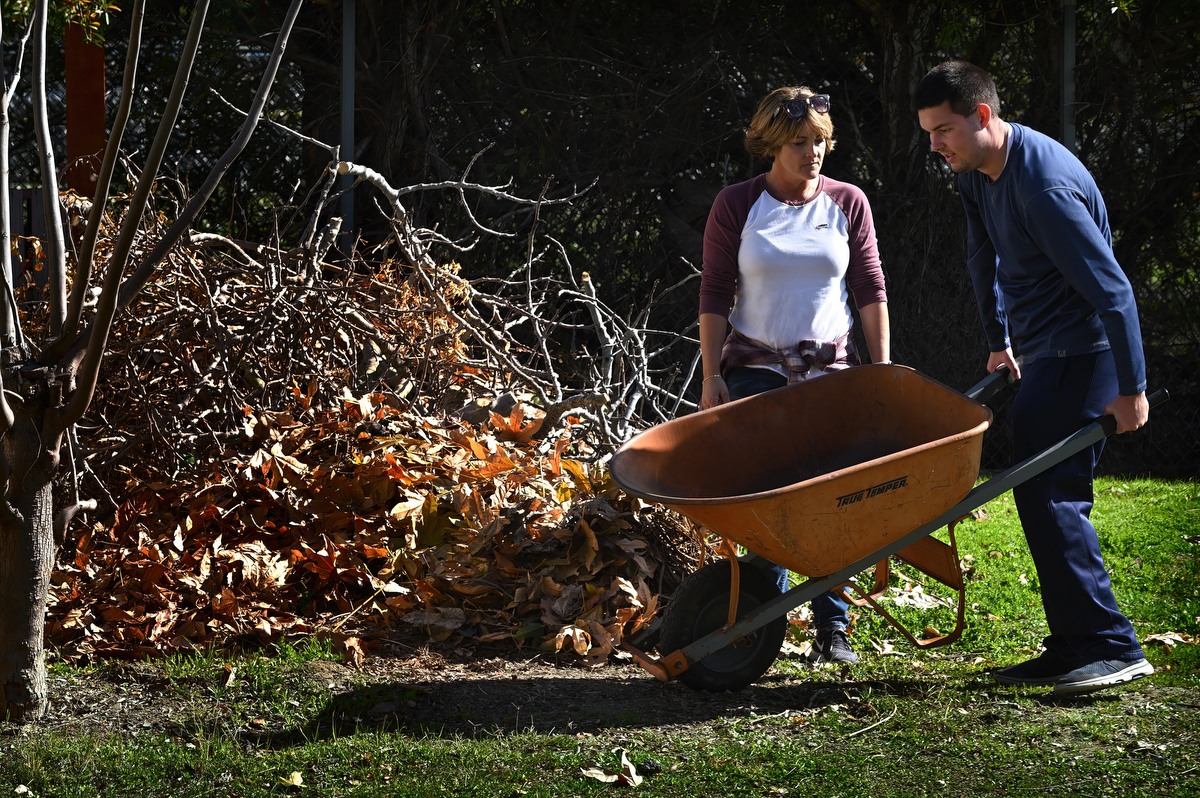By Greg Mellen
Tucked between the play field of San Juan Elementary School and the Old Majors Field Little League park is a little piece of agricultural heaven.
For decades, the plot was a not-so-secret garden.
The plot has a quilted history, from its roots as a nursery tilled by students in the local Regional Operational Program (ROP), through an orchard planted by Alfonso Gutierrez, to degradation as a storage area, to its current renaissance and development as home of the San Juan Capistrano Restorative Gardens and Learning Center, not to mention it weathered a COVID-19 caused interruption from which it is slowly recovering.
From an aerial view the garden resembles an actual quilt, with various squares and rectangles staked out and being prepared for planting, including the fruit-bearing orchard.
Little by little, the garden is taking shape through the work of students mulching and raking, contributions from the community, and the oversight of faculty and volunteers.
“It’s been a major work in progress to get it where it looks like a garden,” said Brian Howell, an education specialist with the Adult Transition Program, who calls the area his classroom.
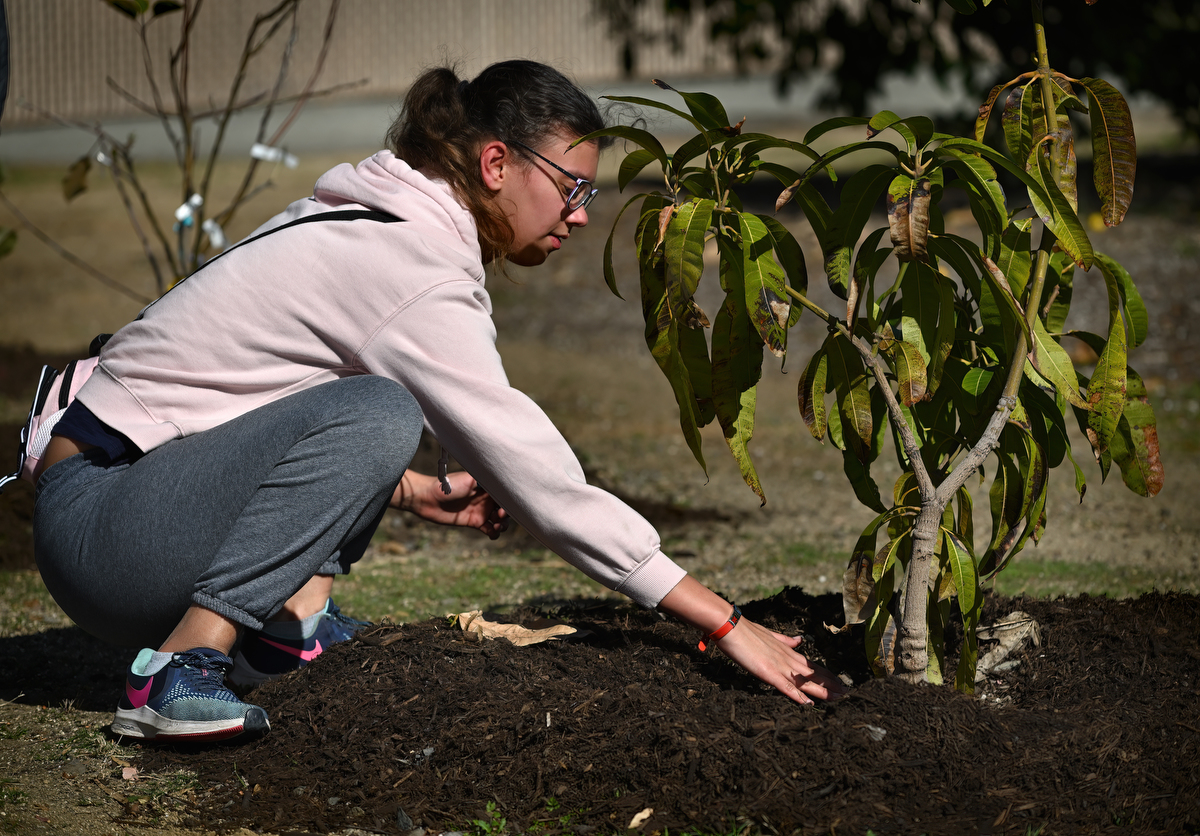
Photo by Steven Georges/CUSD Insider
In many ways the land is still a blank canvas. As such, its uses can be as grand as the imagination. There is a memorial space that can be further landscaped. There is room for a stage area that would be ideal for entertainment and fundraising events, and maybe a student-run produce store, or a coffee stand. If one stands in the garden and listens to the trill of birds and rustle of leaves, anything seems possible.
On a bright January day, there is a hum of activity as a crew of students rakes up leaves and twigs and carts them off in a wheelbarrow. Several students pack mulch around several recently donated apple trees.
A number of raised beds and planter boxes await planting that will yield produce that can be donated to food banks and other programs. In the past the planters have yielded onions, tomatoes, peppers, and eggplant.
A series of gleaming stainless steel stock tanks have been arrayed along one of the fences to grow grapes, berries and other vine fruits.
In the spring, the area will be available for events and celebrations, such as the Sunshine Awards, presented by the Special Education Community Advisory Committee.
The land is shared by a trio of education programs: Bridges Community Day High School, which provides students with an alternative to residential treatment centers; the Adult Transition Program (ATP), for students up to 22 years old with moderate to severe disabilities; and Continued Learning for Adults with Special Services (CLASS), a voluntary program to help students who did not obtain their diploma after four years of high school earn diplomas and employment.
Finding the Hidden Gem
Michele Dorn, a former education specialist with Capistrano Unified School District, is credited for getting the process going and laying much of the groundwork.
Dorn said when she joined Bridges she would take students to wander the periphery of the school and adjacent property.
At the far end of the playing fields, set off by chain link fence, was a weed-strewn piece of land littered with discarded equipment and storage containers. However, Dorn noticed something quite unexpected amid the debris.
“I saw an orchard,” she said. Or at least she saw the remains of what Gutierrez planted decades earlier.
“I said, ‘I have to get a key,’” she remembers.
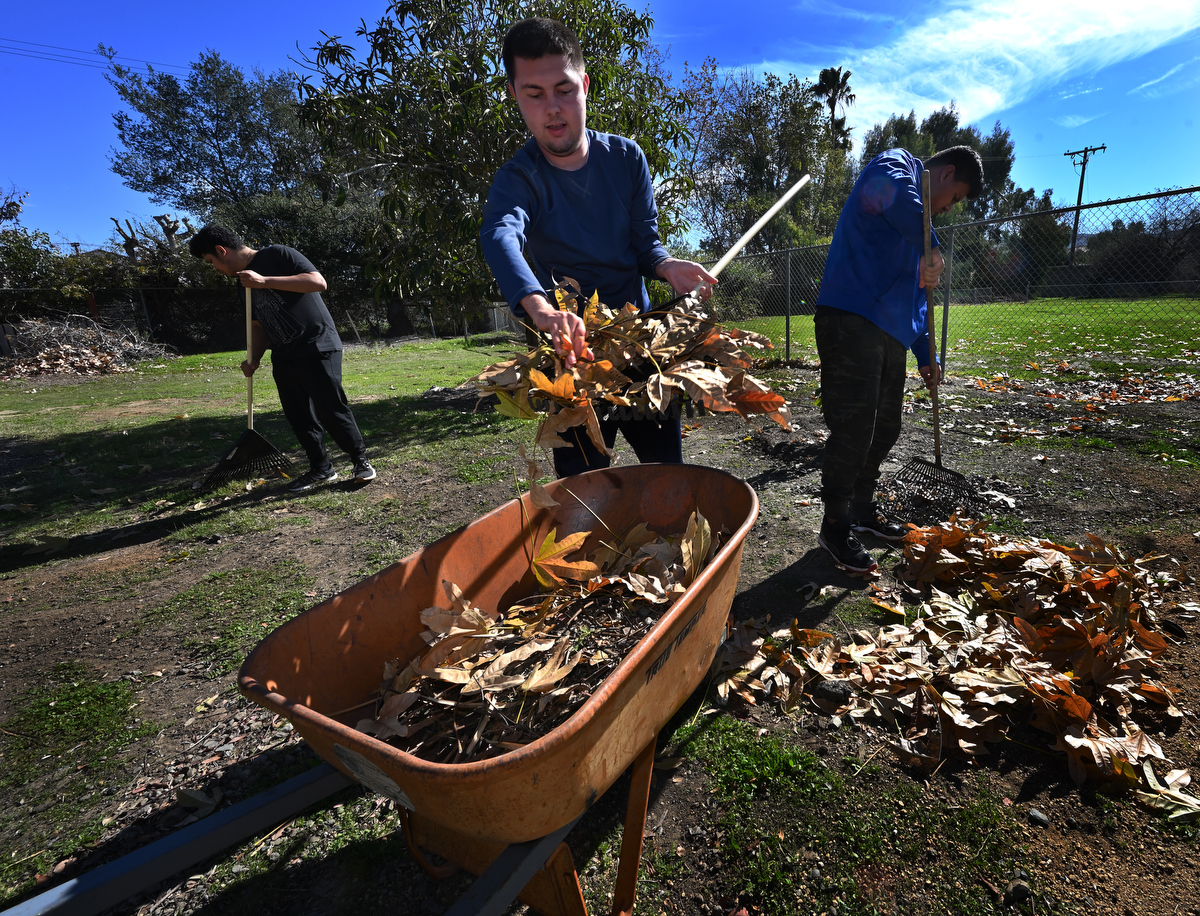
Photo by Steven Georges/CUSD Insider
Soon, Dorn was sneaking through a gap in the fence to explore the secret orchard.
“She realized no one was using (the land),” said DeeAnn Hindman, a special education teacher who credits Dorn for spotting the potential of the land and orchard. In about 2012, Dorn began to put together a plan and the process unfolded.
“You can see the calming effect it has,” Dorn said. Hindman, who helped spearhead the project, has seen it too.
“Our kids behave so differently when they’re outdoors,” she said. “Even our teachers behave differently.”
Gradually, ideas began to circulate, according to Dorn, who finally got a key so she didn’t have to sneak in.
Therapeutic and Practical
To maximize the garden, it was important that the area have a practical and educational value in addition to whatever mental wellness the space provided.
Working in the garden, students can learn about agriculture and work in landscaping or farming. They can gain experience in the business of selling produce and delivering to market.
“The students learn you can feed yourself and make some money,” Howell said.
The orchard has about a dozen trees, including lemon-lime hybrids, a fig tree, avocado and a large loquat tree. Howell said he would like to add native plants, including varieties that will attract butterflies.
Vincent Da Cunha is a student with ATP who has been working in the garden for more than a year.
“I find it to be a mixed bag,” he says of the garden.
“He complains, but then he’s out here every day,” Howell said.
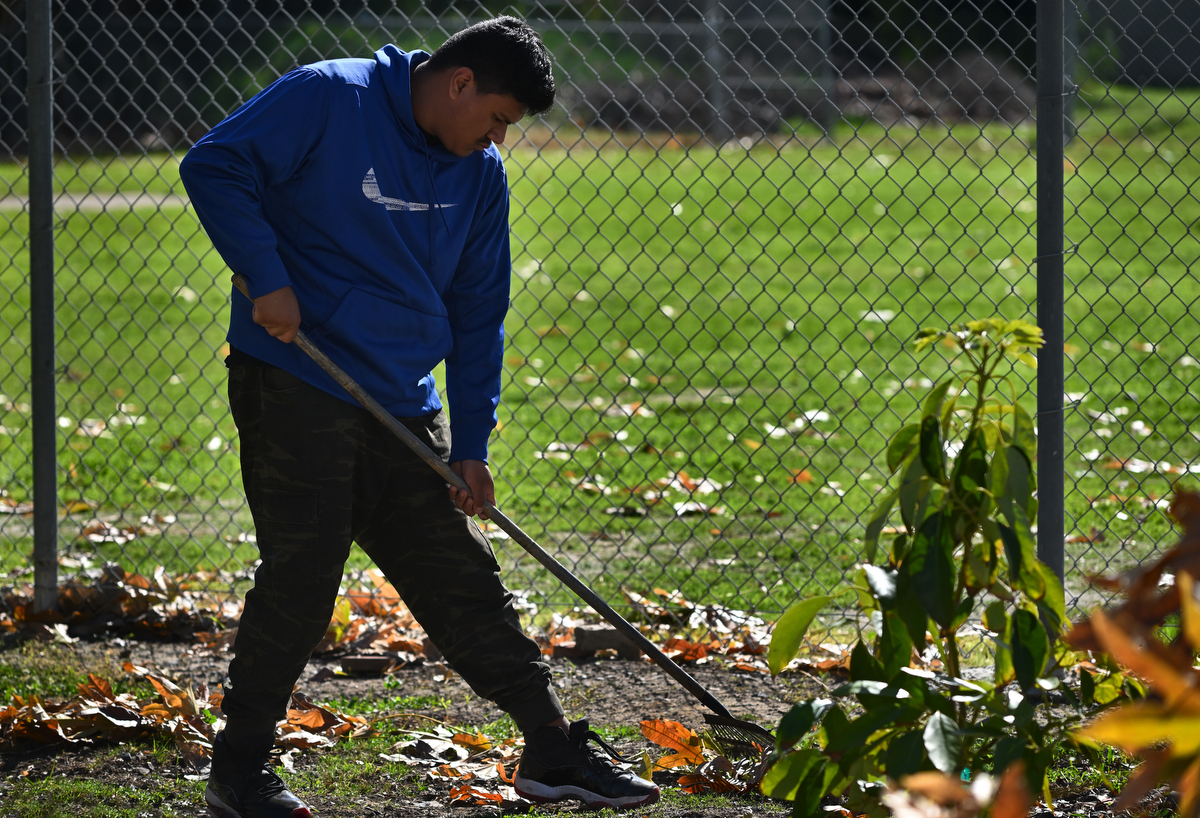
Photo by Steven Georges/CUSD Insider
“There’s too much piling up,” Da Cunha said, jumping to illustrate his point. “The work piles up.”
One student working in the field who has weakness on one side of his body picks up a wheelbarrow and starts to take it to a pile of leaves.
Howell cheers him on for the effort.
“That’s pretty rad,” he says
A former landscaper himself, Howell says he could collect five or six students and do a professional landscaping job.
“It’s a viable option,” he said.
Along Came the Pandemic
In 2017, a Garden Team from the three schools made an application to the school district to use the land for the garden and instruction space.
Local community groups rallied to the cause with the Elks, Rotary Club and local businesses donating goods and services.
“We’ve had so many donations from so many people,” Hindman said.
Since then, volunteers have joined the effort. The land was graded and several trees were trimmed or removed. Several apple trees were recently donated and a couple of Boy Scouts built workbenches for their Eagle Scout projects. High school students have come to and work community service hours.
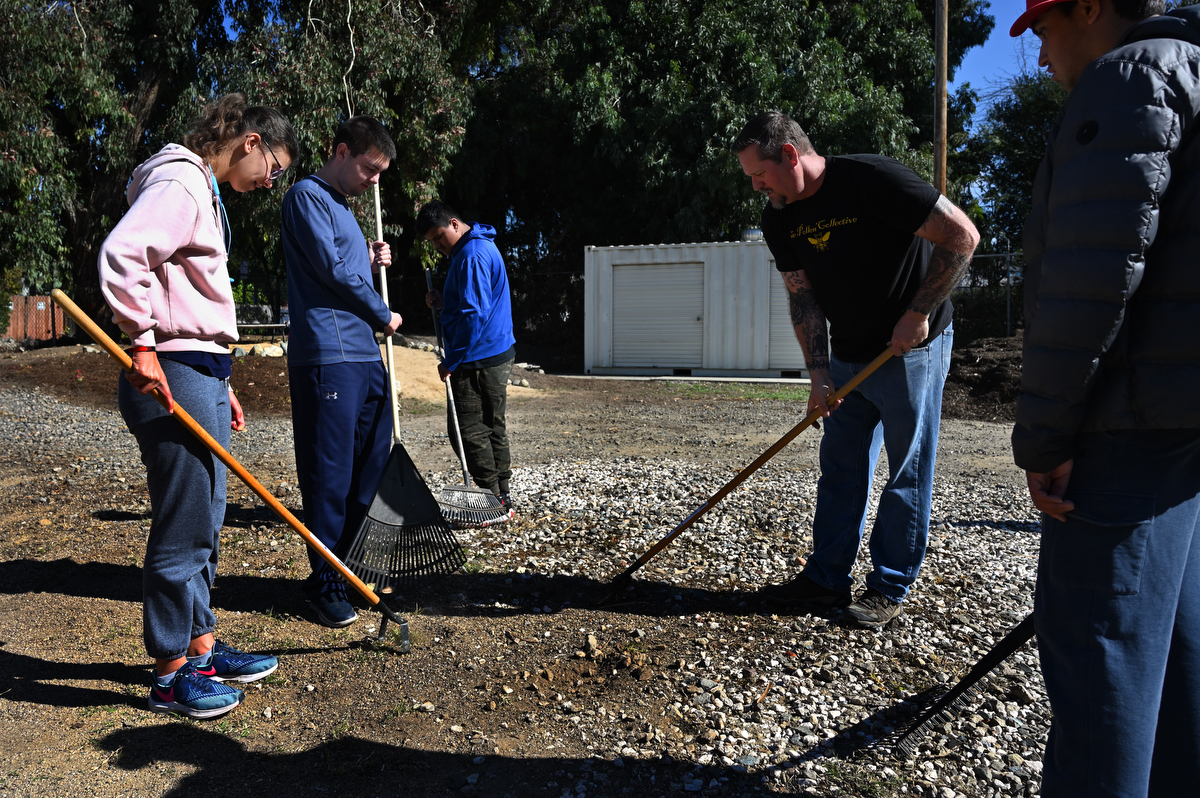
Photo by Steven Georges/CUSD Insider
In 2018, a groundbreaking was held, and in April 2019, the garden staged its grand opening. The next year, COVID-19 struck, with Gov. Gavin Newsom issuing his executive shelter-in-place order, and schools were shuttered.
“It stalled everything,” Dorn said.
Well, not everything.
That spring and fall bumper crops of vegetables and fruits grew, but with no students to harvest them. The weeds grew with abandon. All the momentum that had been built was crushed by the pandemic.
However, as another spring looms, energy is returning to the quilted garden and once again anything seems possible.
“I have a vision. With hard work, little by little, we’ll get there,” Howell said.
Dorn, who recently retired from Capistrano Unified, said the garden made the transition once going full circle from therapeutic nature spot to a full-functioning produce stand, and can do it again.
“There are endless opportunities,” she said.
More garden stories:
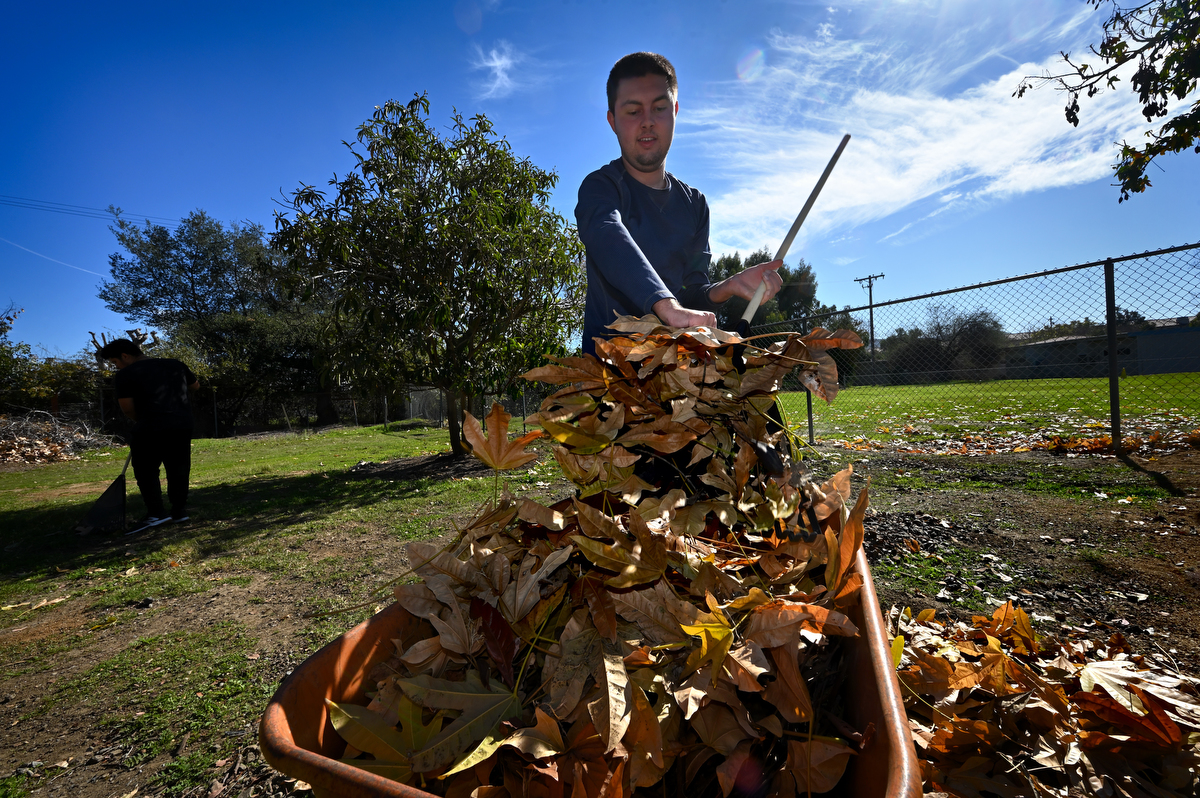
Photo by Steven Georges/CUSD Insider

